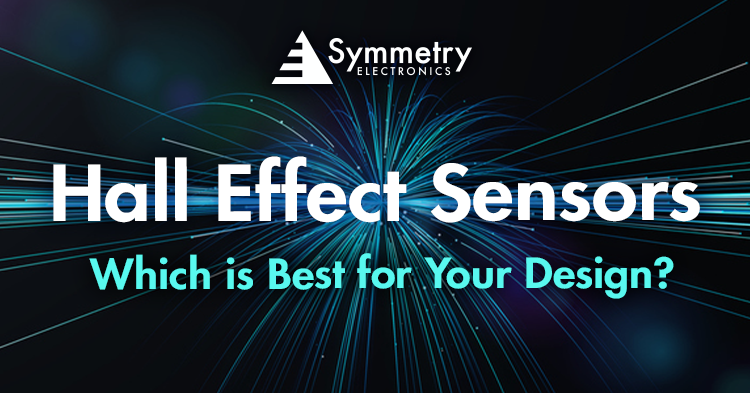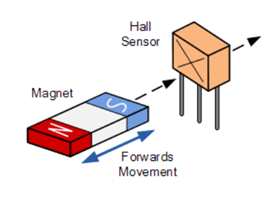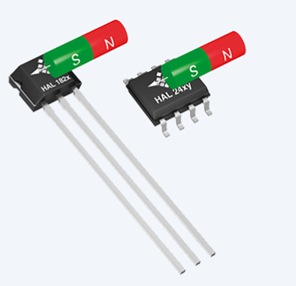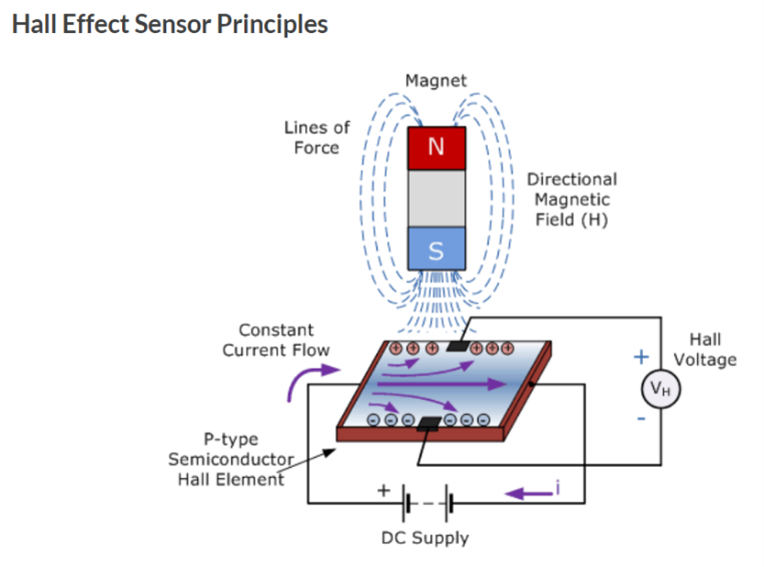- Home
- Symmetry Blog
- Hall Effect Sensors: Which is Best for Your Design?
Hall Effect Sensors: Which is Best for Your Design?
About Augustine Nguyen

Hall effect sensors are used in a wide variety of applications in the automotive and industrial markets. Applications such as car gear position, door locks, car seat position control, HVAC, power tools, robotics, coffee maker, and process automation are just few of the many examples that make use of these versatile sensors. Essentially, any application that requires a sensing of position for a particular moving part (i.e. gears or rotors of a robot arm) will need a Hall effect sensor. With potential uses in so many applications and several types of Hall sensors available, which is best in a given design?

What is a Hall Effect Sensor and How Do They Work?
Hall effect sensors are simply devices that can detect the strength and direction of a magnetic field that is produced from a nearby permanent magnet. These sensors operate on the Hall Effect Principle (Figure 1), which is based on the fundamental concept that magnetic fields affect the flow of electrons and protons (i.e. current). A slab of semiconductor material that is powered by a voltage source (DC supply) has a constant current flowing through it. When a magnet is placed perpendicular to the constant current, the magnetic field force from the magnet causes the electrons and protons to move to opposite sides of the semiconductor. This buildup of oppositely charged particles on the two sides of the semiconductor results in an electric potential difference, which is a voltage. This voltage is called the Hall voltage and is effectively what determines the strength of the induced magnetic field from the magnet. This is because the Hall voltage is proportional to the intensity of the perpendicular magnetic field. If magnetic field direction needs to be measured, then the Hall sensor will have to combine several Hall plates (semiconductor slab).
Source: Electronics Tutorials
All types of Hall sensors operate on this principle. There are three primary types of Hall sensors: Hall switches, linear Hall sensors, and direct angle Hall sensors.
Hall Switches Turn On/Off Based on a Fixed Threshold Level Comparisons
Hall switches measure and compare the external magnetic field strength to a fixed threshold level (Figure 2). As soon as this value is exceeded, the output transistor is switched on or off, resulting in the output voltage of the sensor to output a specific voltage to reflect this switching behavior. Hall switches are ideal sensors for any application that requires simple detection of a On/Off or Open/Close state, like when a door is open or closed.

Linear Hall Sensors Provide Proportional Outputs Based on Varying Magnetic Field Strength
Linear Hall sensors differ from switches in that they do not have a discrete switching state. Instead, the sensor outputs a signal proportional to the strength of the magnetic field as the magnet moves farther/closer to the sensor. The output signal can be delivered as an analog output voltage, a pulse-width-modulated signal (PWM) or as a modern bus protocol (LIN, SENT). The direction of the applied magnetic field can be in a variety of directions relative to the sensor face, like parallel or orthogonal (Figure 3).

Micronas has an extensive line of programmable linear Hall sensors from their HAL 18xy and HAL 24xy families.
Direct Angle Sensors Compare Signals Along More than One Plane
Direct angle sensors (Figure 4) are able to obtain angular measurements of a magnetic field by analyzing their sine and cosine vector components. Such 3D measurements are able to be achieved by having the sensor also integrate vertically oriented Hall plates to measure components of the magnetic field parallel to the chip plane, instead of the components perpendicular to the chip surface. Monitoring the relative strength of both sine and cosine components leads to a stable output even if the distance between magnet and sensor varies. This allows for angular rotation measurement from 0° to 360° with very high accuracy.
Micronas provide programmable direct angle sensors with their HAL 30xy, HAL 39xy, and HAL 37xy families.
Costs Associated with Using Hall Effect Sensors in Application Designs
When designing Hall sensors into applications, cost is an obvious consideration. Costs can vary based on a number of factors that can include:
- Type of sensor
- Volume
- Programmable features
- Package type
- Output Interface (i.e. analog voltage, PWM, SENT, digital, etc.)
- Temperature range
- Magnetic range
These, among others, can dictate the design and manufacturing costs of Hall sensors in applications. If you’re a developer wondering which Hall effect sensor is right for your application, our team of knowledgeable applications engineers are available to guide you to the ideal solution for your design. Consultation is free and available throughout your design cycle. Contact Symmetry Electronics today!






